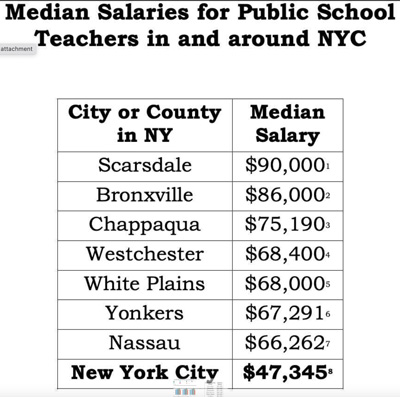Teachers Turnover Rates on the Rise

By Keishly Rosario
Recent research done on the teacher turnover rate post-Covid has shown that they are leaving the profession more frequently than in past years. At the start of this decade, the retention rate for teachers in New York City was stable and climbing, according to New York City Independent Budget Office (IBO). The reason, says the IBO, was the hybrid work style during the lockdown in the 2020-2021 school year. In 2019-2020 the retention rate for New York City public schools was 91%, according to the IBO. However, during the 2022-2023 school year, teachers began leaving at a much higher rate.
“Over the last two years, though, retention rates in NYC Public Schools have declined to about 88 percent in 2022-2023,” say authors of the IBO report “Recent Trends in Teacher Retention and Hiring in New York City Public Schools. “This mirrors a nationwide trend of higher teacher turnover, reflecting the fact that teachers across the country reported higher rates of anxiety during the pandemic.”
The first and the most prevalent reasons for the teacher retention problem are low salaries and a cost-of-living crisis, according to the New York City Council. NYC teachers, and most others, are not being compensated enough to live in the cities where they work says the Council in its report “Teacher Attrition and Retention.” The cost-of-living in NYC is 30% higher than the national average. This means that to live in the city, you need to earn more than $70,000 per year, says the Council.
According to the staff report, one of the significant reasons for the lower retention rate is because of the dissatisfaction with the annual salary. The lack of appropriate compensation for the work teachers accomplish every school year is a major factor in the turnover rate rising, concluded the Council. New York City is losing millions of dollars because it must hire new teachers whenever others quit. To compensate for the loss of seasoned teachers, the Department of Education (DOE) must pay for recruiting and training new, young teachers.
One elementary school staffer, Teacher P, 55, who is choosing to remain anonymous for privacy reasons, recently quit her old job. She was then hired at a different school in the same district with a higher salary. “I love the atmosphere here and the kids, but with these prices, it’s not about that anymore,” she said about her old job. According to Teacher P, the number of kids teachers must be responsible for in a small classroom does not match the amount they are paid.
Another teacher, who also chose to stay anonymous because she is still employed at the school, agrees. Teacher E, 25, did not study education and did not plan to work with kids, but became a teaching assistant and an after-school teacher because it was “easy money at the time.” She explained that she would work from 8:30 in the morning to 6:00 in the evening every day to have enough money for rent and personal expenses. “Even though I did all that, because I’m not considered a full-time employee, I can’t receive any benefits, so they cut my hours instead,” said Teacher E.
Another reason for the lower retention rate may be connected to burnout and mental health struggles that were spurred by the current educational climate. According to a study published in 2022 by the National Library of Medicine (NLM) on the mental health of teachers, in the U.S. 8% of teachers that teach secondary school reported major depression while 12% reported minor depression. A whopping 76% of teachers reported greater levels of stress while 20% reported that their stress levels were almost manageable.
When talking with Teachers E and P, they both discussed how stressful their workload felt. Both explained that, because of the lack of staffing, sometimes they were both left alone or without any support for prolonged periods of time throughout the day with more than 10 kids. “I understand sometimes I’m gonna be left alone in the classroom, but with the number of kids I have to look after, boy it makes my head spin just trying to look all around the room,” said Teacher P. Teacher E had similar thoughts and said that she did not expect this amount of stress.
Both the studies and teachers say solutions to this problem are clear. Increase the salaries of teachers and lower the number students per teacher in each classroom. This will decrease the stress levels of teachers, they say, creating a better atmosphere for all.
Saved under Featured Slide


